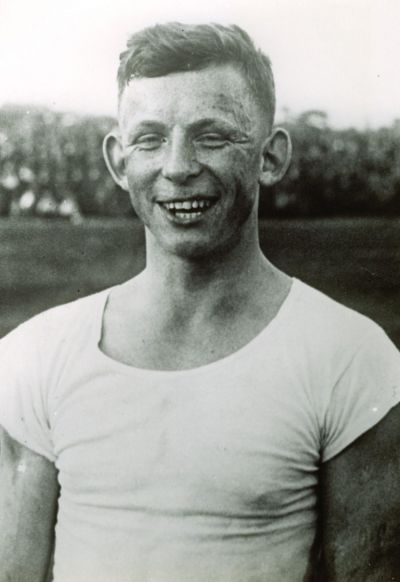From the “pit” to the professional league: Poles and Masurians in Ruhr area football

Schalke as a model case: a mirror of migration history in the Ruhr area
A glance at FC Schalke 04, the Gelsenkirchen prototype of the “Polack and Prole club”, to which the first four of the aforementioned national players belonged, reveals the complexity and confusion that the immigrant society in the area had developed into over the years. Between 1934 and 1942 Schalke won the German Championship six times. The team was peppered with players with Polish-sounding names, most famously the national players Ernst Kuzorra and Fritz Szepan. When Schalke won the Championship for the first time in 1934 and posed in front of the camera with arms raised high in the Hitler greeting, the Polish press mocked them as “Polish German football champions”. Upon which the club management hastened to prove the opposite by pointing out that the players were not “emigrants” and that even their parents had been born in Germany. The majority of the parents of the Schalke players came from southern East Prussia. They did not belong to the Polish immigrants per se, but to the Protestant circle of Masurians loyal to Prussia. Between 1920 and 1940, 30 players in the Schalke team were identified as Masurians, three of whom had been born in Masuria. The Gelsenkirchen Championship team thus reflected the migration history of the region and the social background of the Masurian migration centre, Gelsenkirchen. In this way, players with Polish or Masurian family origins guaranteed the strength of Ruhr area football (especially of Schalke) during the “Third Reich”, but also of the German national team. National Socialist “Volkstumsforschung” employees, who conducted anti-Polish, racist and biological research, solved this dilemma by only finding Masurians in the territory and declaring them to be “German” in their culture and mentality. Here they already saw signs of “Umvolkung” or Germanisation of “inferior” foreign immigrants. The Masurian Schalke stars Kuzorra and Szepan then allowed themselves to be harnessed to the regime's propaganda campaigns and joined the NSDAP. Szepan profited from this “Aryanisation” and took over the Jewish department store Julius Rhode on the Schalke market place.
The post-war period: the third generation
After the Second World War, the collapse of civilisation between 1933 and 1945 resulted in a lengthy suppression of memories of the ethnically heterogeneous social history of the region. In football, however, the children and grandchildren of “Polish” and Masurian migrants were still present. Between 1945 and 1950 the players in the team at Sportfreunde Katernberg in Essen were Jerosch, Kosinski, Pisarski, Majewski, Mieloszyk, Radziejewski and Rynkowski. When SV Sodingen qualified for the final round of the German Championship in 1955, half of the team had Polish or Masurian-sounding names: Sawitzki, Kropla, Lika, Nowak, Adamik, Dembski and Konopczinski. The history of the third generation of immigration was still visible in football. Hans Tilkowski, grandfather of the aforementioned Borussia Dortmund star, had immigrated from West Prussia to the mining area. The goalkeeper's father was still a miner and he grew up in the housing settlement attached to the Zeche Kurl (colliery). Reinhard “Stan” Libuda (1943-1996), the star of the Ruhr area football team, who played for Schalke, Borussia Dortmund and the national football team and who tragically died at an early age, was very much aware of the similarity between his career and his origins and the life of the great French national player Raymond Kopa(szewski) from the Polish miners' milieu in France. But the general public remained ignorant of this fact.
Transnational influence: Northern France
In the Polish milieu in the coal mines of northern France, the history of the Ruhr and the involvement of Polish immigrants in football was actually perpetuated or found its equivalent. In 1948, when RC Lens faced OSC Lille in the final of the French Cup, Lens lost 2-3, but fought back twice from behind against their opponents with goals by “Stanis” Stefan Dembicki. That said, the highly popular Polish-sounding striker was neither born in Poland nor France. But in 1913 in the German coal-mining district in Dortmund-Marten. He was descended from the first generation of Polish-speaking migrants in the German Ruhr region. After the First World War, Dembicki moved to France with his family, signed on in a colliery at the age of 13 and worked in one of the collieries in Lens until his retirement in 1968. In his old age he ran a tobacco bar, which also served as an advance booking office for match tickets and a meeting point for the “Racing” fan club. It was called “Sang-et-or” (Blood and Gold) after the club colours. Here there are obvious reverberations with the tobacco shop owned by the Schalke star Ernst Kuzorra, which was then passed on to “Stan” Libuda.



















